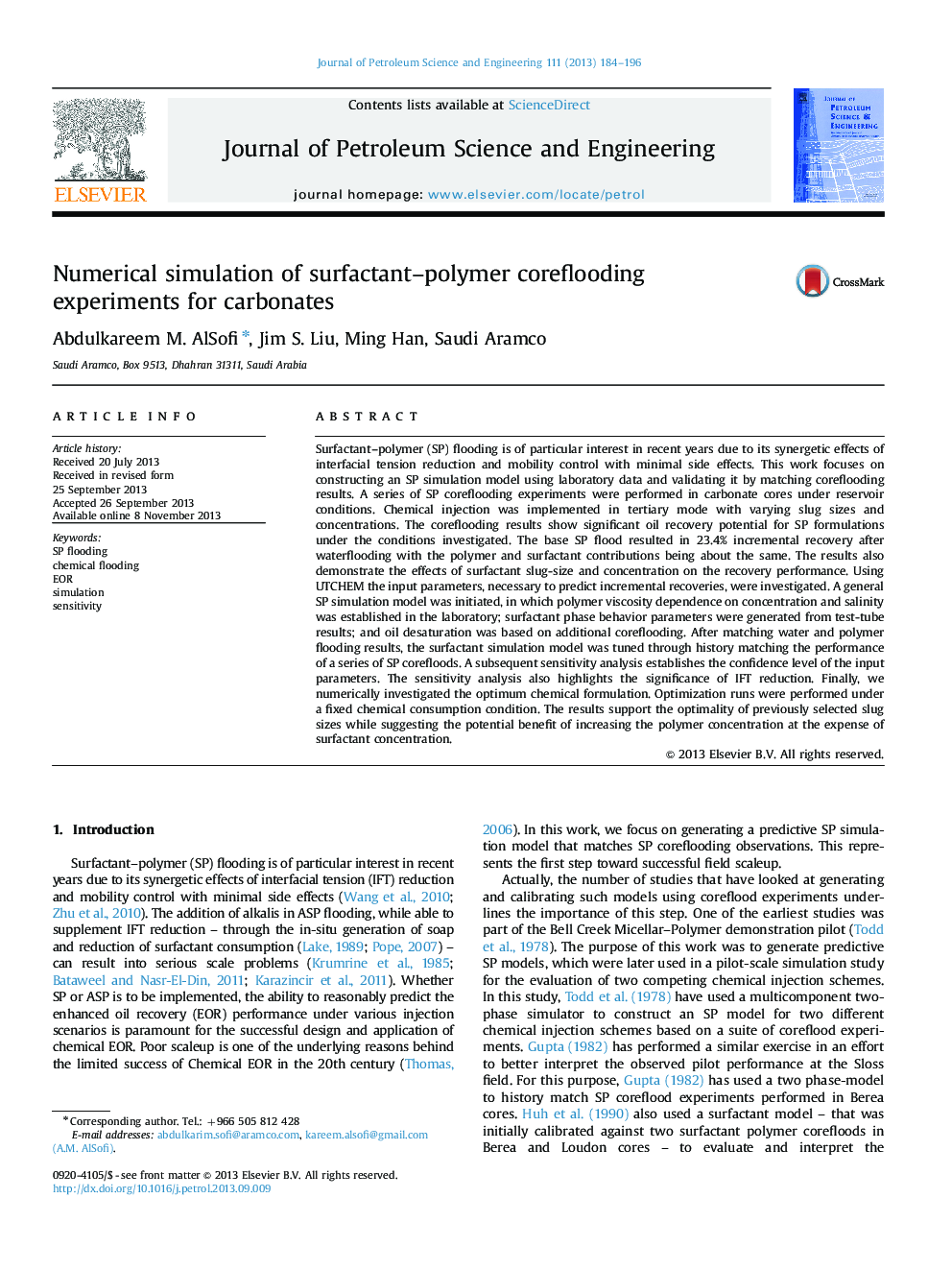| Article ID | Journal | Published Year | Pages | File Type |
|---|---|---|---|---|
| 1755093 | Journal of Petroleum Science and Engineering | 2013 | 13 Pages |
•We demonstrate in detail the construction of a surfactant–polymer model in UT-Chem.•We use the results of five corefloods to calibrate and validate the model.•Chemicals were injected in tertiary mode at varying slug sizes and concentrations.•Thorough sensitivity analysis points to the significance of interfacial tension.•Numerical optimization points to the optimality of a higher polymer: surfactant concentration ratio
Surfactant–polymer (SP) flooding is of particular interest in recent years due to its synergetic effects of interfacial tension reduction and mobility control with minimal side effects. This work focuses on constructing an SP simulation model using laboratory data and validating it by matching coreflooding results. A series of SP coreflooding experiments were performed in carbonate cores under reservoir conditions. Chemical injection was implemented in tertiary mode with varying slug sizes and concentrations. The coreflooding results show significant oil recovery potential for SP formulations under the conditions investigated. The base SP flood resulted in 23.4% incremental recovery after waterflooding with the polymer and surfactant contributions being about the same. The results also demonstrate the effects of surfactant slug-size and concentration on the recovery performance. Using UTCHEM the input parameters, necessary to predict incremental recoveries, were investigated. A general SP simulation model was initiated, in which polymer viscosity dependence on concentration and salinity was established in the laboratory; surfactant phase behavior parameters were generated from test-tube results; and oil desaturation was based on additional coreflooding. After matching water and polymer flooding results, the surfactant simulation model was tuned through history matching the performance of a series of SP corefloods. A subsequent sensitivity analysis establishes the confidence level of the input parameters. The sensitivity analysis also highlights the significance of IFT reduction. Finally, we numerically investigated the optimum chemical formulation. Optimization runs were performed under a fixed chemical consumption condition. The results support the optimality of previously selected slug sizes while suggesting the potential benefit of increasing the polymer concentration at the expense of surfactant concentration.
